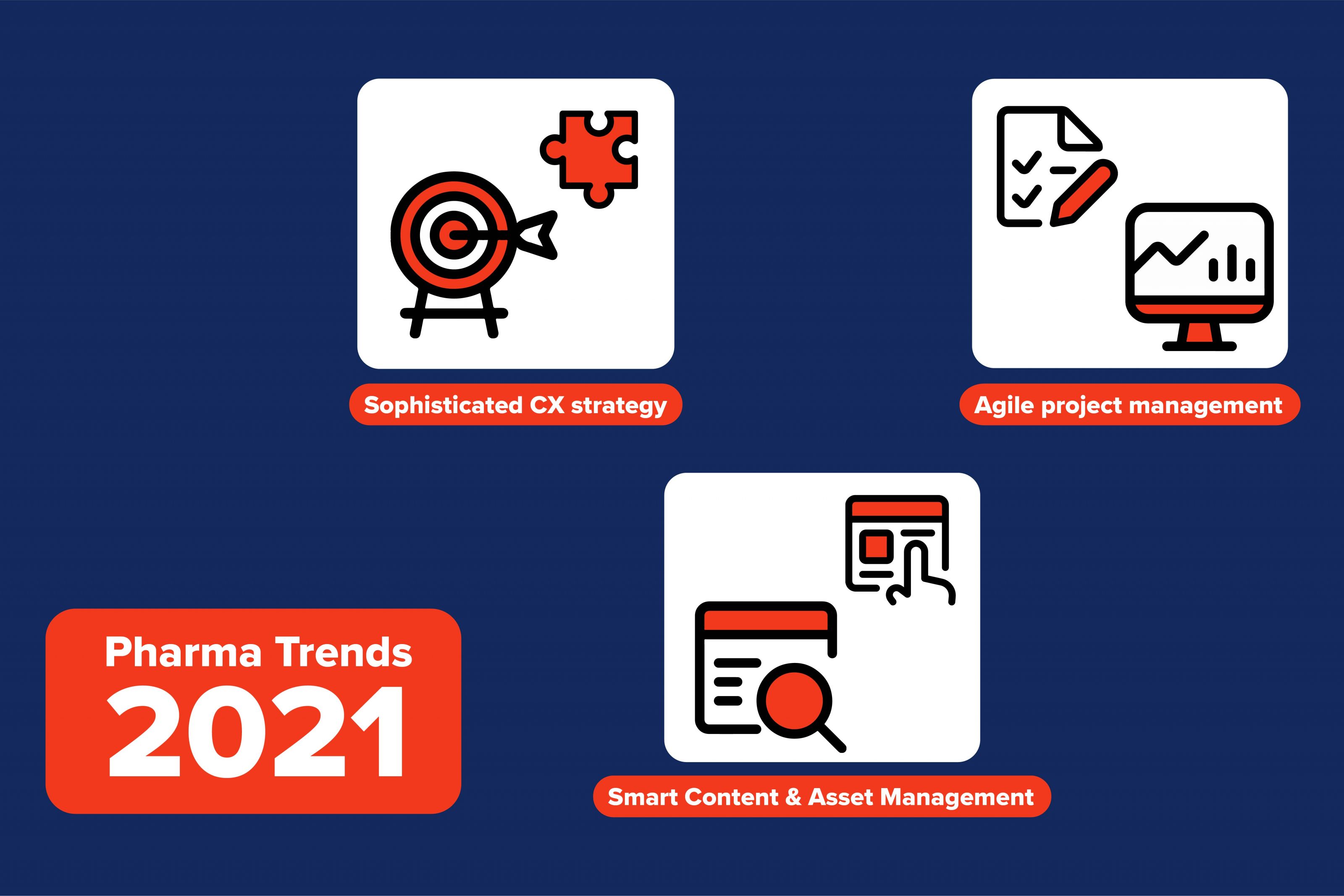Geneva/Frankfurt, March 31, 2021 – How can pharmaceutical companies meet the challenges of digitalization? New competitors are entering the market with digital offerings, while the big players have some catching up to do in terms of digital strategy, agility and asset management. Pharma experts Tobias Hollritt, Head of Sales for German-speaking Switzerland at Isobar, and Jens Reufsteck, Account Director at Namics, have identified the three key trends for 2021. Namics and Isobar Switzerland merged at the beginning of this year and will rebrand under Merkle in the DACH region from April. The two experts have already joined forces to take a closer look at the key digital trends in the pharmaceutical industry and derive recommended actions.

Mass medicine is a thing of the past – in the pharmaceutical industry, all signs point to personalization. Patients are making new demands, and at the same time it is becoming increasingly difficult to reach the target group in the digital age. This shift is particularly challenging for the large and often cumbersome pharmaceutical companies: For them, keeping up in terms of innovation and agility is a daunting task, and one that most cannot manage in-house. At the same time, digital disruption is now rapidly transforming the pharmaceutical market; technological advances are giving new market entrants tools to challenge long-established leaders. Fundamental change is taking place at every point in the value chain – from building new partnerships to embracing healthcare service offerings.
"Pharma industry leaders would be remiss if they now sat back and watched startups and big tech companies change the landscape around them," says Tobias Hollritt. "Only by channeling the forces of disruption to their own ends and by leading digital transformation will they avoid being left behind."
This can be concretely illustrated by three trends that pharma companies should pay attention to in the current year:
Trend 1: A data-driven CX strategy puts patients at the centre
The latest disruption demands a change in perspective that puts the target group at the center of all digital activities – whether they are patients, doctors or pharmacists. Only in this way can pharmaceutical companies create tailored digital products and services and tap future potential. The first step is to collect the target group's data – of course in compliance with the GDPR and applicable regulatory requirements – and then analyze it automatically using AI-based tools. With this data, their wishes and needs can be addressed precisely.
Customers now expect real-time information about digital offers as well as constant entertainment – just as they have grown accustomed to streaming services, virtual voice assistants, and commerce apps. Millennials prefer to use digital communication channels and are now found in all target groups. Equally crucial for CXM (Customer Experience Management) strategies are data protection and transparency: only if both are ensured will customers trust pharmaceutical companies in handling their sensitive data.
"For example, we are helping a Swiss pharmaceutical company migrate its global Drupal website and deploy it in the pharma environment to provide local medical staff and patients with relevant brand and medical information," Hollritt explains. "We're also leveraging Social Studio's artificial intelligence: it reports adverse events and categorizes comments from Novartis' omnichannel environments – all in an automated fashion."
Trend 2: Increasing agility and responding to new market developments
To keep up with ever shorter development cycles for drugs and products, pharmaceutical companies must adopt a more agile approach to project management. After all, intensified competition is also opening up opportunities for new players.
Agile working increases innovative strength – a key factor, especially in the R&D departments of drug manufacturers. Agile product development generates verifiable results quickly while reducing the risk of costly malinvestments. In the pharmaceutical industry, digital transformation is bringing new tools and technologies to the market every day. The more adaptable the company, the faster it can take advantage of these and keep pace with the competition. Agility is also tied to a culture of testing. Pharmaceutical companies should always check which new technologies and channels will convince their target audience.
"This is where our SCRUM Services for Life Science come in, providing customers with experienced Agile Coaches and SCRUM Masters. Tools such as AI-based chat bot implementation also improve the customer experience by increasing agility," says Jens Reufsteck.
Trend 3: Intelligent content and asset management improves customer interactions
According to a 2019 study, 89 percent of all patients educate themselves on healthcare topics. The pandemic is likely to have driven this number even higher. Today, it is critical to deliver increasingly large amounts of relevant content to customers in an efficient and timely manner. Contextualization and personalization also play an important role as they become more granular and reduce time-to-market. Especially in the B2B sector, a highly personalized sales approach is crucial.
This is best achieved with intelligent content and asset management systems. They orchestrate and manage all content in the customer journey across the various corporate channels. The systems provide users with exactly the information they need at any given point in their customer journey. In doing so, companies save time and reduce administrative effort. They can also evaluate results with the system data and decide which content to continue using. At the same time, customers benefit from content that meets their exact needs.
"One example is the deployment of a new global digital asset management (DAM) platform. It serves as the backbone for customer interaction across the entire customer journey – from planning, development, approval and validation to legal review, storage, publishing, management, customer engagement, tracking and analysis," Reufsteck says.










